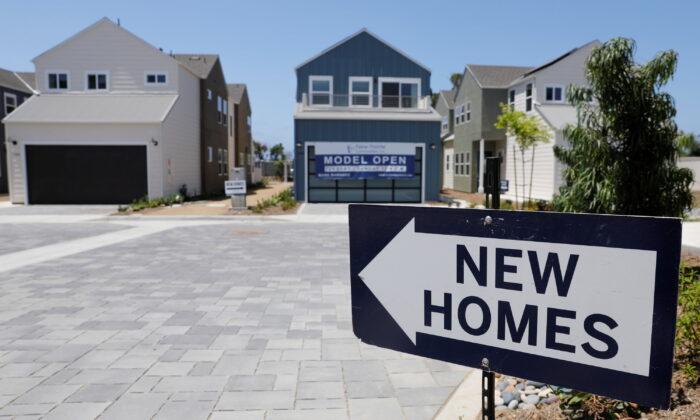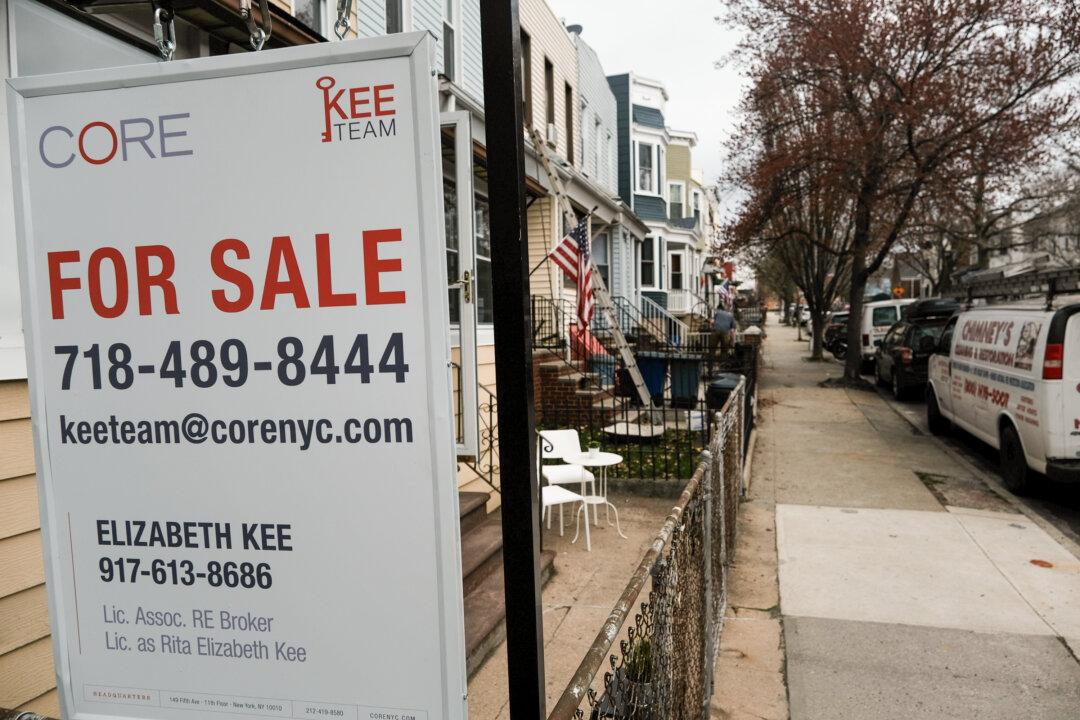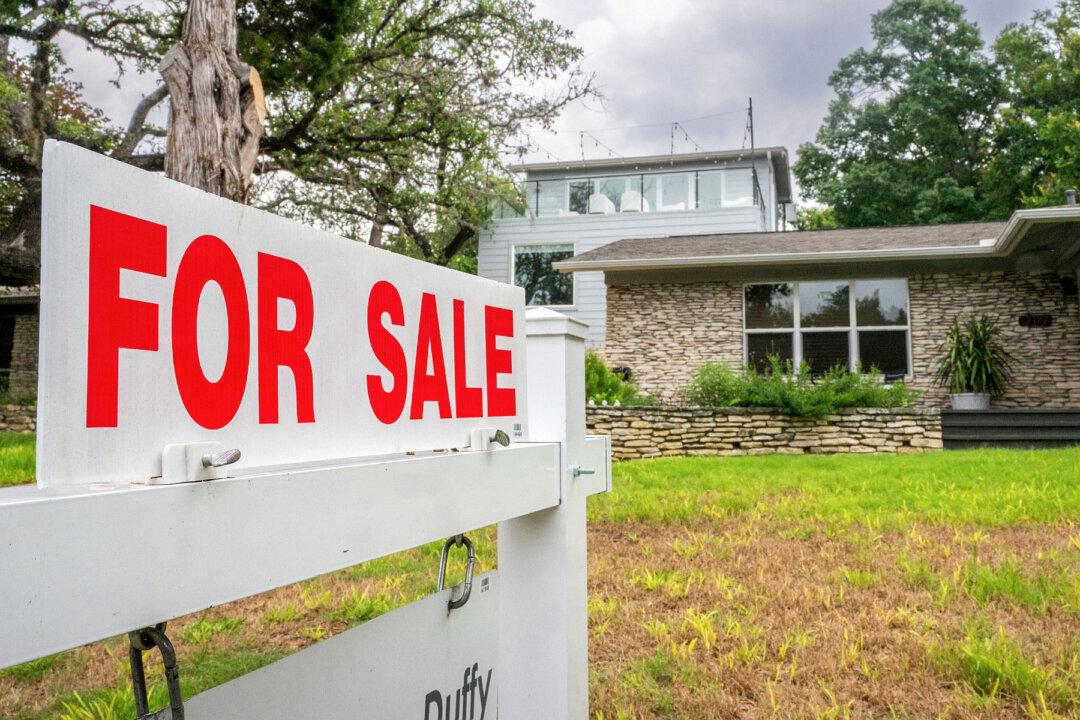The purchase of new homes fell last month as mortgage rates surged and sapped demand, the latest data from the U.S. Census Bureau show.
“Sales of new single-family houses in September 2022 were at a seasonally adjusted annual rate of 603,000 … This is 10.9 percent below the revised August rate of 677,000 and is 17.6 percent below the September 2021 estimate of 732,000,” states a
press release on Oct. 26. There were an estimated 462,000 houses for sale at the end of September, representing a supply of homes for 9.2 months as per the ongoing sales rate.
The sale of new homes rose by 25.8 percent in the Northeast and 10.6 percent in the Midwest when compared to a year ago. However, home sales dipped by 19.3 percent in the South and by 30.4 percent in the West.
The median sales price of new homes sold was at $470,600, up from $413,200 a year ago, while the average sales price jumped, from $470,600 to $517,700 during this period.
Between Aug. 31 and Sept. 28, the average interest rate for 30-year fixed-rate mortgages rose, from 5.66 to 6.70 percent, according to
data from mortgage lender Freddie Mac. It has risen to 6.94 percent as of the week ending Oct. 30.
According to the Mortgage Bankers Association (MBA),
mortgage applicant loan volume fell by 1.7 percent for the week ended Oct. 26. Mortgage activity remained at its slowest pace since 1977.
An Oct. 20 report by the U.S. Census Bureau also showed an annual decline in the number of building permits for privately owned housing units last month.
Housing Recession
The rising mortgage rates and a lack of affordability are triggering a steep drop in housing demand, according to James Knightley, chief international economist at ING, New York. Meanwhile, inventory for sale is rising. He believes housing valuations are “very stretched” at present.“The median price for an existing home is 5.3 times the median level of household incomes, higher than even at the peak of the housing boom of the mid-2000s,” Knightley
wrote in a Sept. 28 article.
“To get us back to the long-run average house price-to-income ratio of around 4 on a three-year horizon would imply prices falling peak to trough by around 20 percent while assuming nominal incomes rise 3 percent in each year.”
The monthly Wells Fargo Housing Market Index fell eight points, to 38, in October—the tenth straight month of decline. This is the longest stretch of declining confidence in the index’s history.
In a
tweet on Oct. 18, economist Robin Brooks pointed out that the result of the National Association of Home Builders survey is a sign of “just how bad things are.” He believes the U.S. housing market has already been in a “deep recession” for a while and that a global recession is coming.





